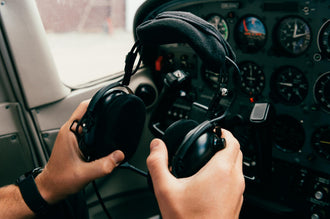
Three Tips For Beginner Pilots
- 08 Feb, 2021
Whether you’ve decided to do it for fun or as a career change, learning to fly is a significant undertaking. It involves weeks of time in the cockpit, and months spent understanding the theory and regulations that help you fly safely and legally. But don’t be disheartened – learning to fly is achievable, it simply takes some dedication and persistence. To help you make the intelligent decisions for your flying career, here are some basic tips to keep in mind.
Choosing your own path
Australia’s aviation licensing framework offers prospective pilots a number of paths to general aviation – the part of the aviation industry outside of commercial air transport. Traditionally, student pilots would study for a Private Pilot’s License, allowing them to fly aircraft in a variety of conditions anywhere in Australia. The downside of this is that gaining a PPL has always been an extremely expensive endeavour – often costing in excess of $25,000, a lot to ask upfront from people who may have never flown in their lives. It can still be done – and many definitely do it, especially if they have their hearts set on commercial flying – but it’s not for everyone.
The increasing popularity of ultralight aviation – defined in Australia as any two-seater fixed-wing aircraft with a maximum take-off weight of 600 kilograms – has broadened new pilots’ options. For those looking to trial flying before they commit to the expense of a PPL, qualifying for a new Recreational Pilot’s License (RPL) from the Civil Aviation Safety Authority or a Recreational Pilot Certificate (RPC) from Recreational Aviation Australia can be a more affordable path. These licenses come with more restrictions – most notably when, where and under what conditions pilots are allowed to fly – but are far less expensive to acquire, often costing as little as a third of a PPL.
Shop around for schools
The type of license you choose will determine which school you ultimately enrol in. One of the key restrictions on a RPC is that all flight must be done in uncontrolled airspace during daylight hours, within 25 nautical miles of your departure aerodrome. For people in large cities, this can limit their choice of flight schools, as they potentially might have to travel a significant distance to get to a school in uncontrolled airspace.
It’s also important to consider what the future holds for you. Where do you want to go after you acquire your next certification? If you’re looking to ultimately transfer from a RPC to an RPL, or an RPL to a PPL, it can pay to choose a school that offers both certifications so you have a continuity of instruction. Working with the same instructor from the same school can be a comfort when making the leap to a larger, more complex plane.
Ensure you have the right gear
This is an essential no matter what level you’re enrolling in. If you’re serious about recreational or commercial flight, you’ll need your own equipment. Requirements will differ from school to school, but one thing you’ll definitely get sick of borrowing from the institution is a headset. Get a quality aviation headset from Pilot Communications and ensure that you’re always comfortable in the air.




